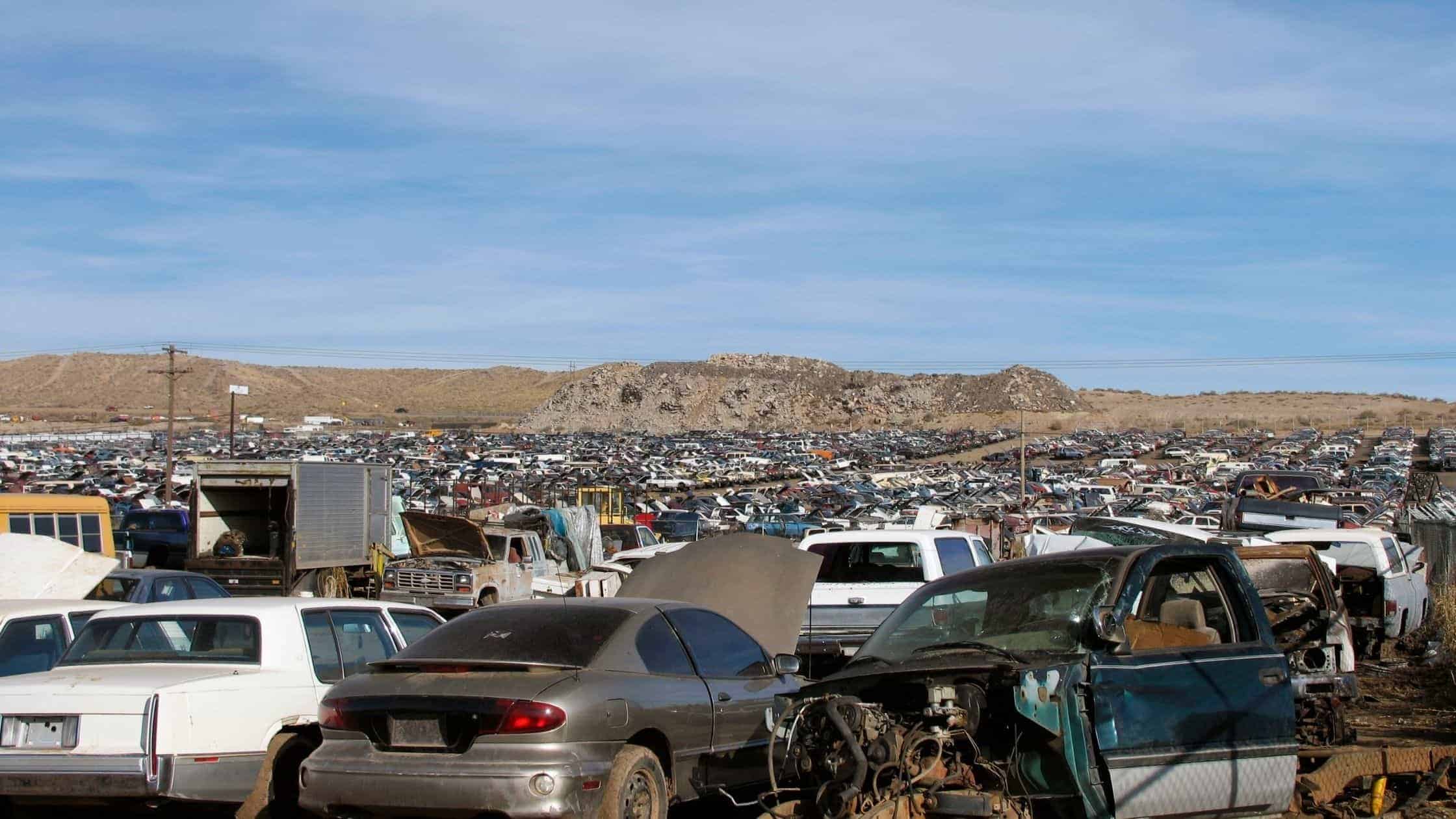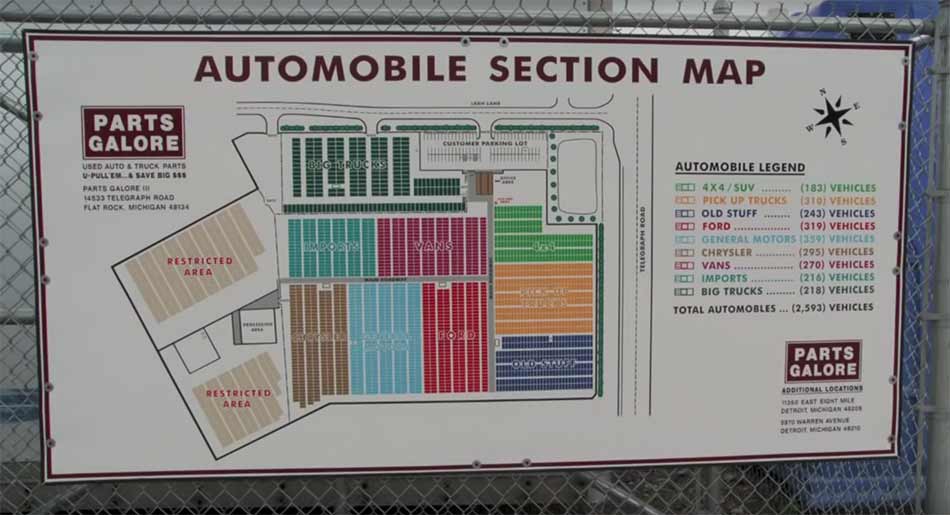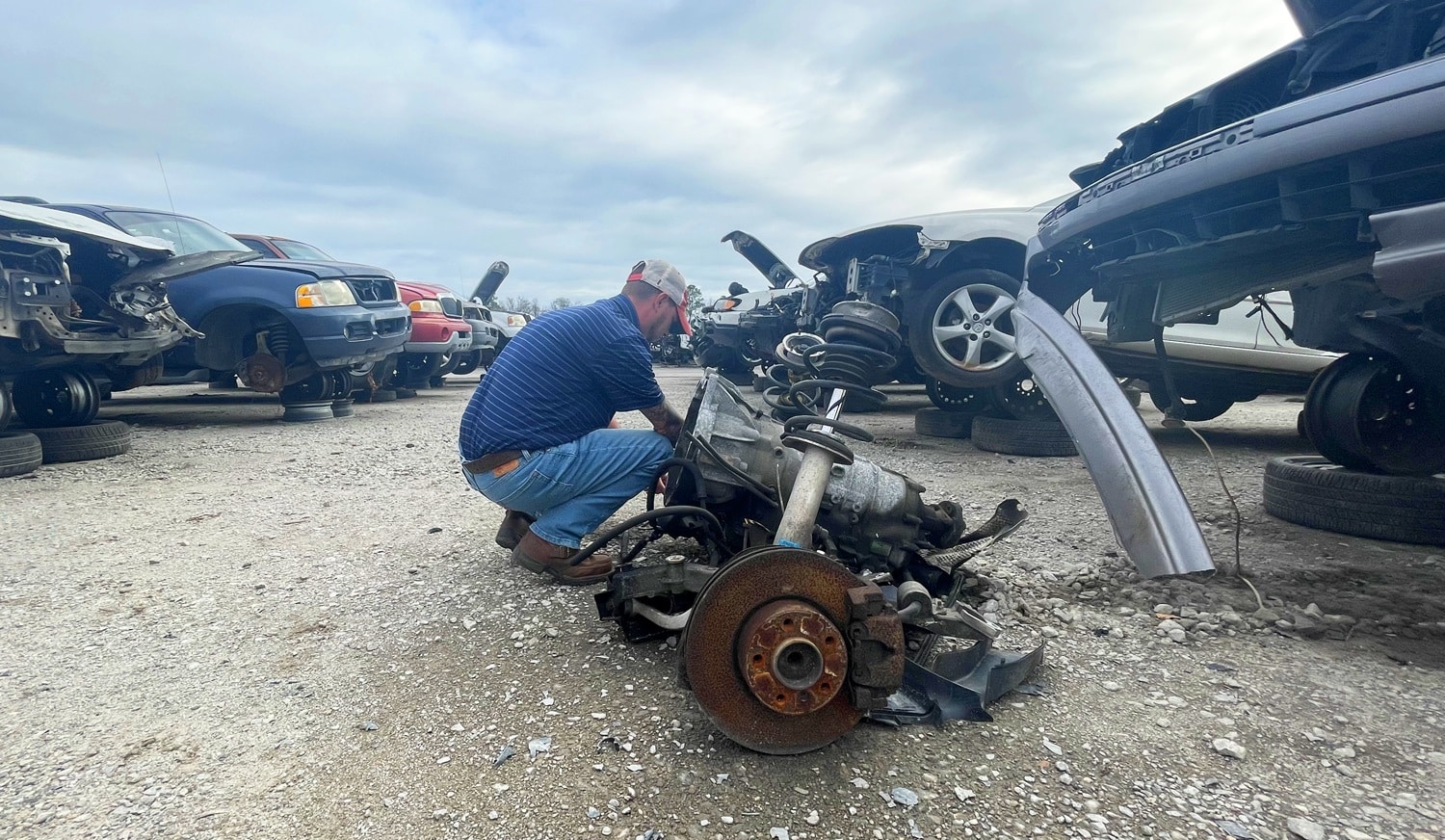Self service junkyards are a great place to save money on auto parts. These are yards that allow you to walk around and remove functioning parts of junked vehicles. You pay for what you take and will save significantly versus retail. In this article, I will share where to find a self-service yard, how they work, and tips for getting the most out of your trip. I will also share my experience with the self service junkyards near me.
Map of Self Service Junkyards Near Me
For “Self Service Junkyards Near Me” or “Self Service Salvage Yards Near Me”, use the map below…
Self service junkyards are commonly referred to as pick and pulls, pull parts, pick your parts, etc. They all translate to the same thing. You go to a junkyard find a vehicle with the replacement parts you need, remove them, and pay for them.
Exploring the Benefits of Self-Service Junkyards
Auto salvage yards play a pivotal role in the automotive industry, particularly in recycling and reusing vehicles. Self-service junkyards have gained immense importance due to their cost-effective and sustainable approach.
These yards offer a treasure trove of used cars, junk cars, car parts, and truck parts, making it a haven for DIY enthusiasts and budget-conscious vehicle owners. The significance lies in the fact that customers can access these yards with their own tools and extract the specific components they need, reducing the expenses associated with professional mechanics.
In doing so, self-service junkyards not only empower individuals to take control of their vehicle repairs but also contribute to the environment by promoting the recycling of automotive parts, thereby reducing waste and conserving resources.

How Does the Self Service Junkyard Near Me Work?…
Self-service junkyards operate like a small business. They have a few employees and pay taxes like any other local business. Some yards charge a small admission fee to help cover overhead administration costs.
They also are regulated by recycling laws and need to meet requirements set out by the Environmental Protection Agency. These businesses are part of the vehicle recycling industry and actually benefit the environment and sustainability.
The business model is straightforward. They purchase junk vehicles and then sell the functioning parts for a profit. In some instances, they may actually fix the vehicle and sell it with a salvage title. There are also various types of self service salvage yards like yards for cars, trucks, boats, construction vehicles, etc. There are also yards that really specialize like Mopar only or Corvette only.
Some yards will run specials a few times a year. These are events that are coveted by junkyard enthusiasts and are called All You Can Carry. You pay a flat price for everything you can literally carry to the cashier in one trip. That would even include a transmission and/or a motor. These are both great for consumers and create a huge profitable day for the junkyard.

How They Get Vehicles in Their Inventory
Self service junkyards get their vehicles from a few different sources. Vehicles come from private owners, junk car buyers, auctions, insurance companies, and businesses. A majority of the vehicles aren’t driveable and on the whole, aren’t fixable. That doesn’t mean there aren’t great parts that work. For example, when a car comes from an insurance company it is the result of a “total loss” claim in an accident. If the car was rear-ended, there is a good chance valuable parts like the motor and transmission are still usable.
How Self Service Junkyards Process Their Vehicles
At the self-service junkyards near me, before a vehicle goes out for pick and pull it must be processed. This important first step is to protect the environment and help the junkyard maximize its profits.
First major fluids get drained. This is stuff like gas, oil, Freon, coolant, wiper fluid, etc. Liquids like oil, Freon, and gas are recycled. Other fluids like coolant and wiper fluid will get re-bottled and resold.
Next, they will pull key parts that have the most value. This often includes the motor and transmission if they are in decent enough shape to rebuild. They will also pull the starter, alternator, and battery.
After that, the vehicle gets set out for having parts pulled. If you want to know more about how to get the best parts, read this.

How a Junk Yard is Arranged
Every Junkyard is a bit different. For the most part, though things will be grouped by manufacturer. This means you will have a section of Fords, Mercedes, Honda, etc. Sometimes inside each manufacturer’s section vehicles are grouped by model so a Honda yard might have Civics, CRV’s, and Accords grouped for example.
It all depends on the yard, but there is often a map. If the yard doesn’t have a map you can ask the attendant to point you in the right direction for your needs.

The most sophisticated yards have an online database. They tag the vehicles that come in and log them in a computer system. You can check the database online from home if they make it publicly available. If they don’t you can just call and ask for what you need and they can look it up. You can often call and ask very specific questions like “Do you have a transmission for a 2007 Corolla”? or “Do you have any 2004 Durango’s in your lot and how intact are they with parts”?
What Kind of Used Auto Parts Can You Find and Strip?
There is a world of auto parts at your fingertips at a self service salvage. You can find any vehicle part you can dream of. This includes doors, mirrors, seats, manifolds, catalytic converters, motors, transmissions, etc. I have found after market turbos, carbon fiber spoilers, high-end rims, and the works. You may even find almost brand-new parts. Sometimes someone will take a junk vehicle and throw parts at it to try and fix it. When they can’t get it to run, they junk it and leave all the new parts on it.
Despite the above, there are certain parts you shouldn’t pull at a junkyard.
What Happens After A Vehicle Gets Stripped?
This is a practice that varies by yard. There are plenty of pull a part yards that just let the vehicles sit and rust after all the functioning parts are removed.
A well-maintained yard does inventory turnover. This is a practice of crushing vehicles that are stripped of value and then sending the crushed shell and frame to a scrap metal plant. This practice serves two purposes. First, it lets the junkyard sell the last bit of the remaining vehicle for scrap. Second, it makes room for new junked vehicles to come into the yard.
Buying Used Auto Parts at a Self Service Salvage Yards
Pros of Buying Used Parts at a Salvage Yard
You can save hundreds of dollars with each trip to a self-service junkyard. There are parts you can get for real cheap like a battery for $12, a door door for $60, and a mid-size car engine for $350. The advantage of a self service yard is that you are doing the labor and the part removal. That means the savings are passed onto you since you are doing the work.
Another pro is that you will find factory-installed and assembled parts. This means way more OEM parts than aftermarket parts. Essentially perfect fitment, the original part (important for a resto project), and if you weren’t sure how it was originally installed you can see it.
Not all yards, but some will allow you to get an add-on warranty. For a few extra bucks, you can get a 30-day junkyard credit or part exchange in the event the part you bought doesn’t work out. I tend to do this for more mechanical pieces like motors and transmissions.
For our best tips on pulling parts read: 16 Tips for Pulling Parts at an Auto Salvage.

Cons of Buying Used Parts
The downside to used parts is quality. The vehicles are in a junkyard for a reason. Some parts may have reached their end of life or have been completely beaten on by the previous owner. For any part, you should inspect it before removal and again after removal. Look for corrosion, rust, and other signs of severe damage.
Self Service Junkyards Near Me Conclusion
Self service junkyards are the best place to get replacement parts. In some instances like a restoration, they may be your only option. The thing I like about self-service yards is that you can get parts cheaper since you are the one doing the work. Full-service yards have to charge more because they have more labor overhead.
All in all these junkyards are actually one of the keys to environmental sustainability as they look to put reusable parts back into service. So whether you realize it or not, supporting a junkyard is supporting the environment. This is what I have learned from the self-service junkyards near me.
Frequently Asked Questions (FAQ) about Self-Service Junkyards
What is an auto salvage yard, and how does it relate to self-service junkyards?
An auto salvage yard is a place where discarded, damaged, or junk cars are stored for dismantling and recycling. Self-service junkyards, often part of auto salvage yards, allow individuals to access these vehicles and retrieve parts on their own, thus “u-pulling” the components they need.
How can I save big money by using a self-service junkyard?
Self-service junkyards offer significant cost savings as you pull and pay for your own parts. You avoid labor costs associated with professional mechanics and can find parts at a fraction of the price compared to buying new ones.
Do self-service junkyards have fresh inventory?
Yes, many self-service junkyards regularly receive new vehicles, ensuring a fresh inventory of car parts. This means you have a good chance of finding the specific part you need.
Are the prices at self-service junkyards reasonable?
Self-service junkyards are known for their great prices. You can often find parts at a fraction of the cost of buying them new or from traditional auto parts stores, making it a budget-friendly option.
What should I bring to a self-service junkyard when looking for my own parts?
To maximize your visit to a self-service junkyard, bring your own tools, safety equipment, and any necessary containers for the parts you collect. It’s a DIY experience, so being prepared is key to a successful visit.
